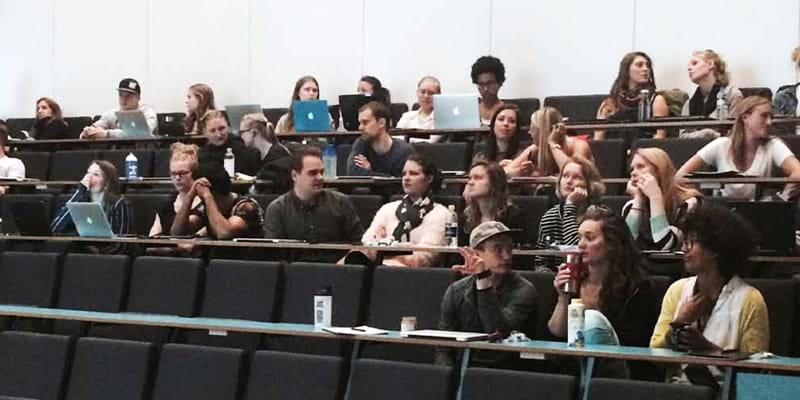
Vendlet Participates in Research Centers’ Advisory Board
Research Centers to prepare Vocational College students for the digital labor market.
4. July 2018
New Research Centers to ensure that students get acquainted with assistive living technologies and can keep up with the digital development in the labor market, which is not least relevant for the healthcare and medical device industries.
9 Research Centers established at Vocational Colleges
The project, which is established under The Ministry of Education, began at the end of last year, and is set to run during the course of the next three years. During this time, 9 new research centers have to make sure that students at Vocational Colleges are dressed to meet the demand of the labor market, which faces increasing digitization. For this purpose, the centers have been given a total of 133 mil. DKR.
The issue is not least relevant when it comes to the use of assistive living technologies in the care sector – an area, which has been assigned two centers. As a part of the project, Vendlet has been invited to participate in an Advisory Board established in one of the Research Centers in Copenhagen. The purpose of the board is to bridge the gap between manufacturers, educational institutions and municipalities (who manage most care homes, hospitals and other institutions in Denmark), when it comes to assistive living technologies.
On the board, Vendlet represents the manufacturing and business perspectives. “I am very happy and proud that we have been invited to participate in the advisory board,” Occupational Therapist, Pia Beck, who will be Vendlet’s representative on the board, says: “I look forward to participate and hope that this effort will help with the recruiting challenges that we face in the health care sector,” she says.
Students must be Prepared for Technological Developments
And at the current state of things, the students aren’t well enough equipped to handle the developments that take place with assistive living technologies. A development, which will by the look of things continue for many years to come, not least due to studies that show how the implementation of assistive living technologies help create better circumstances for both clients and staff when it comes to work health & safety.
Among other things, this means that the students should, to a much higher degree, think of technology as a natural part of their workday. Introducing the students to technology while they are still at school will make them more capable of paring a certain task or challenge with a technological solution.
However, the students Pia Beck meets when teaching at Vocational Colleges make it very clear – they do not wish to work in an industry where the best available tools aren’t at their disposal. “If the healthcare industry doesn’t succeed in making itself more attractive and implement more technologies, the demographic development will represent an almost impossible challenge as a result of the lack of healthcare staff,” Pia Beck states.
More Resourceful Young People needed at Vocational Colleges
Making the vocational educations more attractive, is exactly one of the goals of the Research Center and Advisory Board. This is necessary to attract more resourceful young people to these types of educations. The hope is to secure more engaged employees in the care sector, but also to make sure that the people who complete vocational training are already familiar with technologies.
And change is needed in the future: “One of the challenges we already face today is the lack of qualified and trained employees. This can only be solved by making the healthcare sector a more attractive choice,” Peter Maindal, CEO of Vendlet says, and continues: “I think that one of the main ways to do this is to create a more safe work environment and to offer the employees the tools, which means that they can better solve the challenges they meet and further contribute to the development of the industry,” he says.
Besides improving the students use and familiarity with technology, the development of new technologies is also an area of focus, as it is often the caregivers and healthcare staff, who face the challenges every day, that can see where the gaps in the market exists. Therefore, students also have to be equipped to think innovatively and consider how technology can help solve their challenges, and perhaps even become entrepreneurs themselves.
Together, all these initiatives are steps towards a stronger workforce within the healthcare sector in Denmark.
